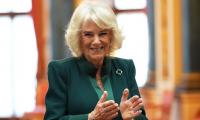In the sublimely expectant (politically) months of late 2012, I resigned from my job and joined the PTI Campaign Office. Within three months, owing to perhaps the ease with which it was possible to rise in campaign bureaucracy, I was managing 12 districts in Punjab for the unprecedented and hugely successful Tabdeeli Razakar Programme. It was a time of excitement and considerable optimism, and even though the novelty and hype post-October 2011 seemed to have dwindled, there was still a path to the ultimate victory: the PTI in the centre, Imran Khan in the PM’s chair.
However, I had begun to notice a worrying approach, which was not just confined to the leader’s speeches but was found in the lower ranks as well. The PPP had, not without reason, been dismissed as a worthy rival, and all guns now pointed towards the PML-N. The PTI chief strongly believed the public needed an enemy to be driven out of their homes to vote – they needed to be given a battle. This meant that the PTI was now in a duel with the PML-N, brushing off its ‘outsider’ credentials in the process, for better or for worse.
While this particular strategy culminated in the election campaign, the seeds had been sown very firmly sometime in 2011, evident from IK’s media appearances and speeches. As a low-tier operative, it wasn’t for me to comment on what led to this focused assault but I would argue my case anyway, pointing to the PTI losing ground in Punjab in surveys.
It seems centuries ago that the PPP was in government and Rehman Malik the interior minister; it would help to invoke that image to fully fathom the significance of the PTI’s approach. By 2013, Punjab was in its fifth year of despising Zardari and Co. in the wake of one of the worst five-year periods in the country’s history.
Khyber Pakhtunkhwa was hardly any less sympathetic towards the government, and Sindh, while a PPP stronghold, was ripe for a small breakthrough more than ever. What the PTI leadership made of the opening in Sindh is a separate debate and can simply be explained as: too little, too late. The point to be stressed is that the chief adversary of the voting public was largely the PPP, and in Sindh where it wasn’t, some focus and the outsider tag could have brought at least some results.
At that time, to pour all the venom on the relatively less-in-the-picture PML-N, was a strategy that made little sense. While it helped wipe out the PPP in Punjab, it condemned the PTI to a distant second in Punjab for years, perhaps decades to come. The PTI had evolved into an ‘anti-PML-N party’ from the novel, refreshing entity it once was. Many supporters, especially former PML-N supporters and PML-N inclined neutrals, gradually began to lose interest in the face of the uni-dimensional assault.
The campaign office and some of the senior leadership, though, were in complete denial. All independent surveys would be dismissed as of dubious credibility. Interestingly, some in the data and analysis department that didn’t deny the results of the surveys had other reasoning to fuel their relentless optimism: calculations of expected turnout which would render the PML-N’s lead meaningless. At one point during my challenge of their faultily formulated projections, a senior operative, confused, wondered in amusement if I were on the PML-N’s side.
The recent lockdown push has been analysed in many ways, and crucially, questions are being asked of the performance of the Punjab chapter of the party. The truth is: considering the effective anti-mobilisation tactics employed by the Punjab government, only huge participation from the general public would have made flow of numbers towards Bani Gala possible. However, the general lack of sentiment by the everyday man in Punjab for Imran’s lockdown was clear to any independent observer. Like the first sit-in in 2014, the numbers from Punjab were dismal compared to the expectations of the PTI chief.
While the party’s focus was, and will understandably be, on where it lacked in organisation, its real failing is in having disenfranchised a large section of his voters that watched the likes of Sheikh Rasheed transform from top adversary to a front-line ally. Perhaps the PTI’s strategic mistakes in Punjab are best understood by examination of its ownership of the Musharraf-era minister: a staunch ally of a former dictator, now willing to stop at nothing to bring the political demise of Nawaz Sharif. Rasheed had been a near-universally reviled figure in Punjab when he began to forge his way into Imran Khan’s circle.
This tone-deafness perhaps explains other shortcomings and transgressions that have resulted in the party’s diminished appeal, especially in Punjab. It is discussed in some party circles that the Imran Khan of old had his metaphorical hand on the pulse of his party workers and supporters; post-2011, the communication channel eroded and its culmination was Imran Khan’s declaration during Aleem Khan and Ayaz Sadiq’s race in October 2015 that those workers/supporters that spoke against the tycoon’s nomination were Trojan horses.
The somewhat cult-like identity of the party is full of contradictions. It seeks spotless transparency that it has failed to implement among its ranks. The pragmatism that has been extended to the party’s working, from selection of candidates to party elections, is suddenly abandoned in the country’s political arena. The unwritten, unmentioned ‘truth and reconciliation’ with many of the party leaders that have come from all over the political spectrum, and Sheikh Rasheed, has been too much to ask for when concerning the current federal and Punjab government.
Flirtation with the PPP, among others, in a bid to dethrone Nawaz Sharif or to submit him to enquiry seems to escape the party think-tank as an example of deafeningly loud inconsistency. With any protesting voice from within the party quickly labelled as some variant of ‘Trojan horse’, it was only inevitable that the party would soon be an embodiment of contradictions.
The limited room for argument in the party has resulted in a party that is impatient and aims to bring down symbols rather than work for systematic change. While Imran Khan and the party geared up for a sit-in against election rigging, Asad Umar was fighting a solitary war for forcing lawmakers to undergo tax audits. The ‘battle’ against election rigging was little more than a call for examination of symptoms of a phenomenon that in actuality has much more at its roots than simply a collusion of the PML-N with the returning officers. Since then, no step of any significance has been taken, no reforms pushed for, to ensure that the 2018 elections are more transparent.
The party’s following that still remains, though, is very satisfied with the direction; they have the enemy they voted against in sight. Their leader verbally slays the opponents consistently, he threatens their power with his aggressive protests; it’s all they asked for.
The time that could have been spent governing KP and, in parallel, developing stronger communication with the masses was ceded in favour of the viscerally satisfying pursuit of eliminating corruption through bringing Nawaz Sharif under independent investigation. How the structures that are intertwined in corruption need to be dismantled escaped the PTI chief’s narrow field of vision; discussions on the economy and welfare of farmers and labourers are nowhere to be seen. Instead, a constricting and simplistic position on transparency and corresponding politics is the order of the day.
What ails the PTI today is its deaf ears and broken lines of communication with the masses. Whether this development coincided with the advent of the ‘big names’ is up for debate; however, there is no denying Imran Khan’s voice is not ‘awaami’ like it used to be, so to speak. IK’s discourse has shifted from that of a protester-in-chief against the masses’ suffering to that of a combatant that lives to have his boot on the throat of his opponent one day.
Every now and then, his charisma preys on even completely disillusioned workers like me and it is during those moments that one feels sad to find it impossible to agree with his politics. All one can hope for is that the theatrics, lockdowns and trade of insults gives way to introspection, revival of communication channels and focus on deeper analysis of what ‘change’ entails.
He tweets @osamaakram
The writer is a former PTI campaign manager and currently runs a sales and logistics company.
Economic nationalism remains potent political narrative, influencing both Republican and Democratic platforms
Yes, blockchain, decentralised and distributed ledger technology, is foundational backbone of cryptocurrencies
Blue carbon covers merely 2% of ocean surface but absorbs 50% of carbon dioxide
During WWII, Japan’s economy and national morale were plummeted by its doomed alliance with Germany
One can imagine how confusion will affect psyche of not just observers but also of participants of various ongoing...
After November 30, it will be impossible for ordinary internet users to access all banned websites, including X







